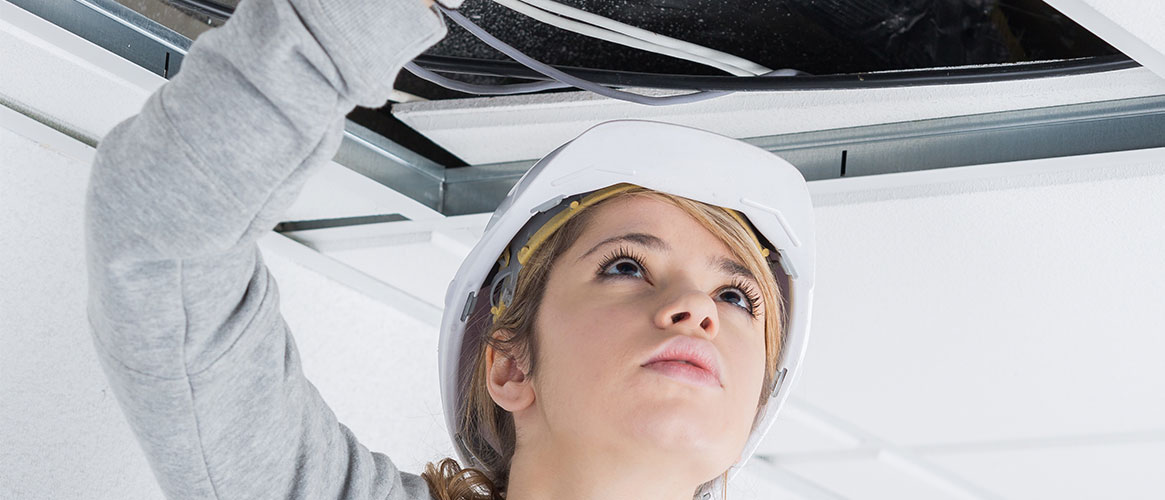Hazards could be lurking in your building if it has been closed for a long period due to COVID-19 lockdowns. Your pipes, structures, or building ventilation system may need some attention to keep your employees safe and to reduce COVID-19 risks. Stagnant water systems can become a breeding ground for bacteria that cause Legionnaire’s disease, a type of pneumonia. Undetected leaks may have led to mold growth. Metals, such as lead or copper, can build up in your pipes. Ventilation systems may need modifications to reduce the risk of COVID-19 transmission.
The hazards are real! The Centers for Disease Control (CDC) estimates there are at least 5,000 cases of Legionnaire’s disease reported each year in the United States. Mold can cause eye and skin irritation as well as coughing and wheezing. Metal build-up in water pipes can be harmful to health. And COVID-19 is still a serious health threat in the workplace. Fortunately, there’s a lot you can do to reduce these risks to your employees when reopening buildings. Check out the tips below and in the Checklist for Reopening Buildings After an Extended Shutdown.
Legionella
Cleaning out stagnant water systems can eliminate Legionella bacteria. One way to do this is by flushing out any standing water in pipes for 30 minutes and cleaning out ventilation system drip pans. Keeping the water heater temperature at 140 degrees will reduce Legionella growth. You can also treat the water with chlorine and reduce the Legionella through water filtration. The Environmental Protection Agency has developed inspection checklists for maintaining building water quality, and guidance for slowing its spread in buildings.
Mold
In normal operation, ventilation systems supply fresh filtered air and remove humidity from the building. Idle ventilation systems may create conditions that allow mold to grow in damp areas. Look for signs of water damage and inspect the air handling units, roof and ceiling tiles, plumbing systems, exterior windows, and outside facing walls near sprinkler systems. Inspect buildings for any signs of mold damage; remove any contaminated items. You can measure humidity levels in the air by using a direct reading instrument; relative humidity should be below 50 percent. Moisture-measuring devices can be used to evaluate solid building materials. If there are any musty odors, outdoor air dampers or windows should be opened to purge the building with fresh air. The EPA’s Guide to Mold and Moisture can provide further guidance.
Metals
Plumbing that is not in use can become corroded by increased acidity in water standing in the pipes. Lead can leach from older pipes, solder, fixtures, and fittings. Copper can get dissolved due to increased corrosion in copper pipes. You can remove aerator screens at the faucet which may be dirty, and then flush the plumbing system. If you use cold water for drinking, it will generally have less contamination than hot water. You can also do lead testing to make sure your water is clean.
COVID-19
Evaluate your building ventilation systems and indoor airflow to confirm proper function and to look for ways to reduce the spread of airborne diseases like COVID-19. The U.S. Centers for Disease Control (CDC) provide guidelines for ventilation systems. Recommended practices include increasing the amount of fresh outdoor air coming into the building, increasing air filtration levels, and changing airflow patterns by using fans inside buildings. In buildings where there is no central ventilation system, this may mean opening windows and using portable HEPA air cleaners. In buildings with more complicated central ventilation systems, you can change fan motors or building filtration systems to increase the amount of clean air circulating indoors. You can also make changes to the airflow patterns and pressurization within a building to assure that air moves from cleanest areas towards less clean areas.
Make the right moves for safety
You can make your workplace safer when you reoccupy your building with the right preparation. By controlling humidity and leaks, you can prevent mold growth. You can reduce or eliminate the risk of Legionella and lead exposure If you take these steps with building water systems. Evaluating and making the right changes to the building ventilation system can bring in more outdoor air and improve filtration to help reduce COVID-19 transmission.
